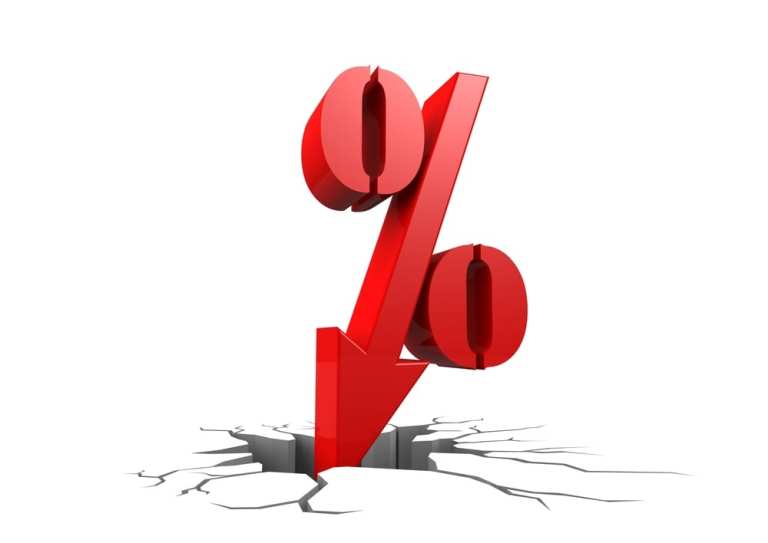Trade wars. Currency wars. And amid it all, lots and lots of debt.
Where and when — and, yes, even will — the shoes start dropping?
Tongues and fingers wagged last week when a Danish bank offered negative interest rate mortgages earlier this month.
Beyond the headlines, the ripple effects loom, the warning signs flash.
To that end, according to Jerry Flum, CEO of CreditRiskMonitor, the situation is akin to the Looney Tunes cartoons where Wile E. Coyote overshoots the edge of the canyon, limbs scrambling … and yet momentum continues until he looks down and plunges into the abyss.
Usually, Flum told Karen Webster in a recent conversation, the average citizen need not be overly concerned with the vagaries of debt and stock markets. Overvaluations happen, corrections happen — all part of the normal processes tied to investment and economic cycles.
Advertisement: Scroll to Continue
This time is different, he said.
Negative on Negative Debt
There exists a considerable amount of negative interest rate debt. How huge? About $16 to $17 trillion worth, according to Flum. It’s a debt load extended by lenders to corporates that has not been seen before at this scale and it’s all unlikely to end well, he said, for the debtors or their creditors.
To get a sense of what would induce someone to take on negative debt, or for a bank to sell that negative debt in the first place, Flum offered up a hypothetical transaction.
Consider the Goldman Sachs professional tasked with selling a negative interest debt instrument to a sophisticated buyer also steeped in the ways of Wall Street and the corporate world. Moreover, as Flum recounted to Webster, all of these players and stakeholders in the game are savvy, intelligent traders and professionals, often from the same elite schools.
In essence, asking someone to buy a piece of paper for $1 million that states they will get back $950,000 in five years (even less, if fees are factored in) means that at least they’ll get paid back something in five years — especially where that paper may be backed by government guarantee. That’s because in countries like England, and Germany, in Japan and elsewhere, armies and navies and marines are in place, and the government-as-backstop safety net is not going to go away unless there’s a revolution (unlikely, to be sure).
However, drill down a bit, said Flum, and the premise of interest rate debt hints at a working assumption that is somewhat pessimistic behind the trade.
“Why am I doing this? I am doing this because I believe that the 95 cents is going to buy me $1.25 in goods and services, in terms of purchasing power. It’s a sophisticated argument and way of saying that I expect a depression,” he said.
In other words, said Flum, these lenders are “frightened to death” that if they give their money to someone else — a bank or a corporation bent on, say, expanding operations — they are not going to get their money back when they want it or maybe not at all.
From Junk Bonds to Junk Heap?
Beyond debt that pays negative interest rates, danger lurks with the $2.5 trillion in junk bonds, where high-interest rates hint at the expectation that lenders are not going to get paid back (the rule of thumb in lending is that higher-risk borrowers get charged higher interest rates). He noted, too, that U.S. gross domestic product (GDP) is about $19 trillion, so the amount of debt that is outstanding is significant by any measure.
Flum said that the people who are ultimately lending the money to the lenders themselves are doing so through their individual retirement accounts (IRAs), through pension funds, through the stock market’s exchange-traded funds.
“If the companies borrowing the money go bad, that means that ultimately the investors are going to have a lot less money,” he said. Less money in hand means that consumption will drop as individuals save money rather than spend it. The pullback will be substantial, considering that the stock market is about 140 percent of GDP. A 20 percent pullback in stocks will have an outsized impact on GDP, he said, where perhaps 30 percent of GDP will evaporate.
All of this trumps debate over whether the U.S. economy is growing at 2 percent or 3 percent, he said.
As for investors, and the panic that might ensue, said Flum, “not one of them, including me, has ever lived through the circumstances that we are looking at today.”
Worse Than 2008 … And The China Factor
In fact, he said, the situation may be worse than what we thought was the worst, at least in modern times — which of course was the Great Recession.
This time around, he said, debt levels are higher, as measured in terms of personal debt, and where governments have had 10 years of negative interest rates.
“We have total ‘misinvestment’ going on all over the world,” he said. “Every crazy company in the world that should have been out of business five years ago is able to borrow money to pay the interest expense.”
Against that backdrop, he said, China looms heavily as a factor in how it all ultimately plays out and pays out.
We’re in the midst of a currency war, he said, and he added that the planned economy that has been China’s hallmark is one that is too complicated to avoid overextending debt to its domestic corporations (and where those firms need to sell a lot to make their investments in plant, property, equipment and workers pay off). At the same time, he said, a significant number of Western economies over the past several decades have outsourced as much manufacturing as they could to China to streamline costs.
As a result, he said, Western economies have effectively offloaded the risk of economic contraction to China.
“Now the Chinese are disproportionately owners of more manufacturing than they should own, normally, under a normal functioning world economy and therefore they are the most cyclical,” said Flum. “They have the most amount of debt and they have the most amount of capitalist risk. It’s an awful situation for the Chinese.”
As a rule of thumb, there exist roughly 70 to 80 years between depressions. “Most depressions are debt and credit contractions,” he said. “They’re not over-valuation of stock market contractions. They are primarily debt and credit because debt in credit wipes out people. And it wipes out the lenders.”
As Flum told Webster: “The bond market is like an A-bomb waiting to go off. It will destroy wealth and scale that nobody’s ever seen before.”




